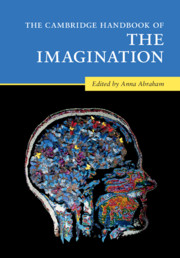Book contents
- The Cambridge Handbook of the Imagination
- The Cambridge Handbook of the Imagination
- Copyright page
- Dedication
- Contents
- Figures
- Contributors
- Acknowledgments
- 1 Surveying the Imagination Landscape
- Part I Theoretical Perspectives on the Imagination
- Part II Imagery-Based Forms of the Imagination
- 12 The Visual Imagination
- 13 Musical Imagery
- 14 Neurophysiological Foundations and Practical Applications of Motor Imagery
- 15 Temporal Mental Imagery
- 16 Emotional Mental Imagery
- 17 Multisensory Perception and Mental Imagery
- 18 Evocation: How Mental Imagery Spans Across the Senses
- Part III Intentionality-Based Forms of the Imagination
- Part IV Novel Combinatorial Forms of the Imagination
- Part V Phenomenology-Based Forms of the Imagination
- Part VI Altered States of the Imagination
- Name Index
- Subject Index
- References
13 - Musical Imagery
from Part II - Imagery-Based Forms of the Imagination
Published online by Cambridge University Press: 26 May 2020
- The Cambridge Handbook of the Imagination
- The Cambridge Handbook of the Imagination
- Copyright page
- Dedication
- Contents
- Figures
- Contributors
- Acknowledgments
- 1 Surveying the Imagination Landscape
- Part I Theoretical Perspectives on the Imagination
- Part II Imagery-Based Forms of the Imagination
- 12 The Visual Imagination
- 13 Musical Imagery
- 14 Neurophysiological Foundations and Practical Applications of Motor Imagery
- 15 Temporal Mental Imagery
- 16 Emotional Mental Imagery
- 17 Multisensory Perception and Mental Imagery
- 18 Evocation: How Mental Imagery Spans Across the Senses
- Part III Intentionality-Based Forms of the Imagination
- Part IV Novel Combinatorial Forms of the Imagination
- Part V Phenomenology-Based Forms of the Imagination
- Part VI Altered States of the Imagination
- Name Index
- Subject Index
- References
Summary
Musical imagery – the mental experience of music – is a common occurrence for both musical experts and nonexperts alike. A diverse range of experiences can be classified as musical imagery, from the replaying of a tune in a listener’s head after hearing it on the radio to a composer conjuring up the next notes of a new symphony. Overall, research in this domain has indicated that incidences of musical imagery often replicate a perceptual experience with a high degree of fidelity, and similar neural resources are recruited in both music perception and imagery. The diversity and fidelity of musical imagery experiences can be affected by expertise, suggesting imaginative processes related to music may be developed through dedicated, long-term practice. Both everyday and expert experiences of musical imagery can vary widely in terms of both intentionality and modality of recall, with some episodes comprising aspects of auditory, motor, and visual imagery. Implications for our understanding of creativity and suggestions for cross-disciplinary approaches to integrating psychological research findings with creative practice are discussed.
Keywords
- Type
- Chapter
- Information
- The Cambridge Handbook of the Imagination , pp. 187 - 206Publisher: Cambridge University PressPrint publication year: 2020
References
- 7
- Cited by



